The rise of India’s first kink fashion brand
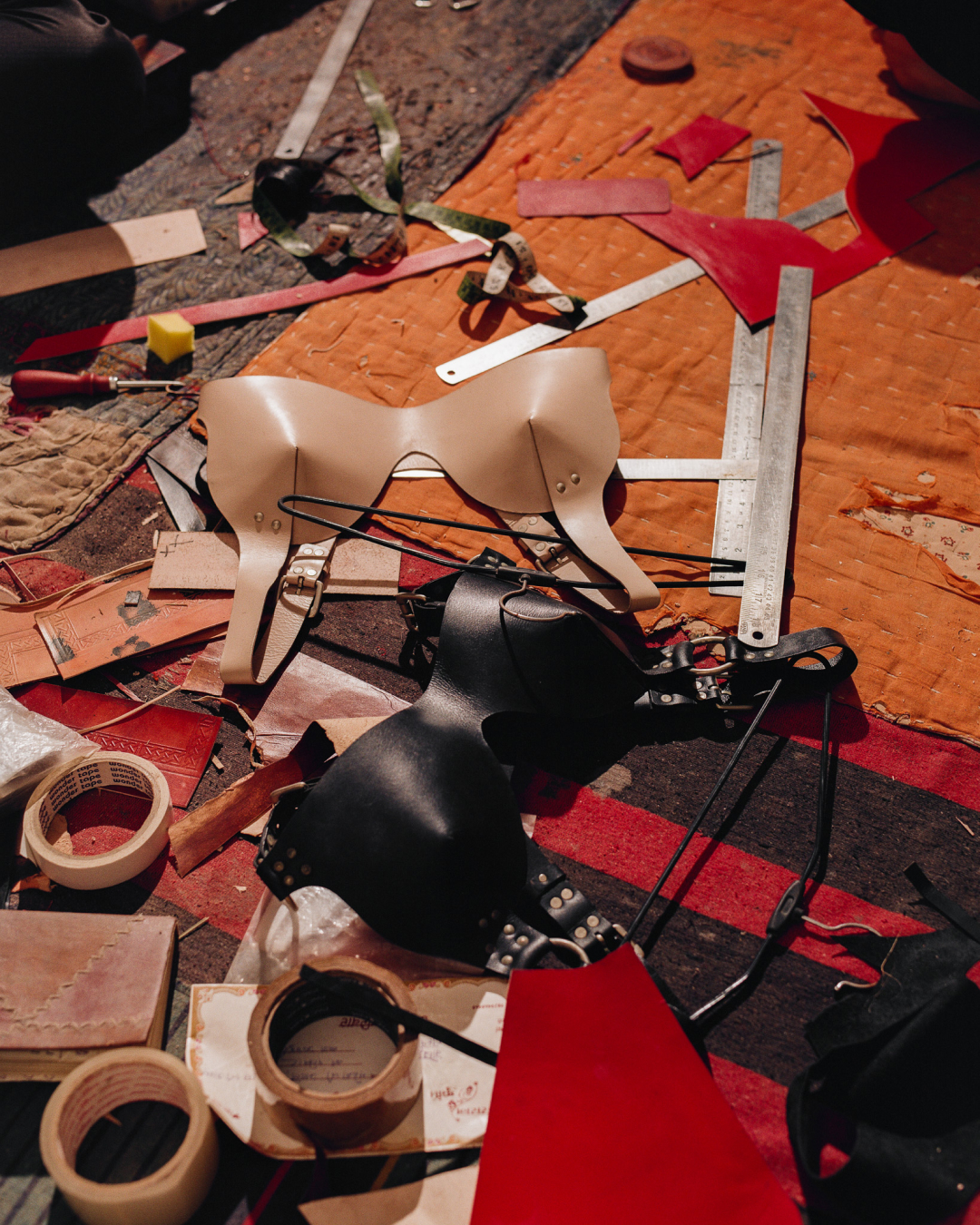
Photography by Carl van der Linde
Arielle Domb interviews the founder of Subculture—an Indian fashion brand normalizing kinks, fetishes, and the free sexual exploration that existed in pre-colonial India.
On a hot Friday afternoon in October, Randhir Singh takes a taxi from his apartment in Jaipur, leaving behind the city’s dense textile markets, its labyrinth of pink gates, forts, and palaces. He arrives an hour later in a village on the outskirts of the city—a quieter, paler landscape, where stray dogs and cattle roam wild. Pulling up outside an exposed concrete house, draped with cotton clothes strung over washing lines, Singh greets two men who sit cross-legged outside, methodically staining the leather sleeves of spell books with mahogany dye.
For 150 years, this family business—Anisha Enterprises—has been manufacturing leather products like slippers and diaries, to sell in Jaipur and beyond. But for the past four years, since meeting Singh, the company has added new products to their business: blindfolds, bite gags, pup-masks, hard and soft leather handcuffs, spiked leather collars, studded corsets, and harnesses.
Randhir Singh is the founder of Subculture, "India’s first homegrown kink fashion brand," one of a number of sex-positve brands launched in recent years that have helped spark conversations around sex, sexuality, and consent in a country where such topics are often seen as taboo. But launching a kink brand in Rajasthan, one of India’s most conservative states, is not without its challenges. Singh has faced skepticism among manufacturers, shadow bans, and social media backlash.
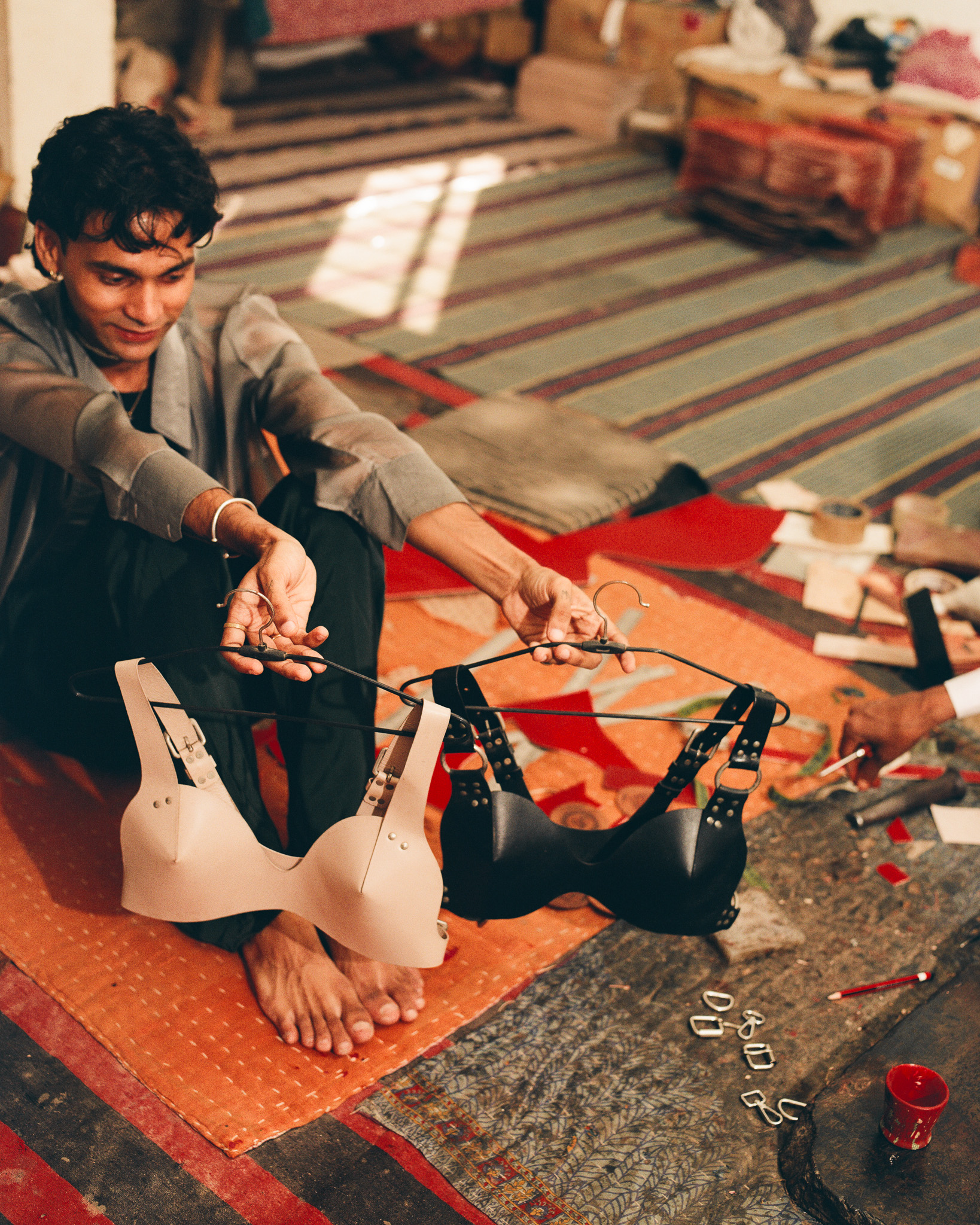
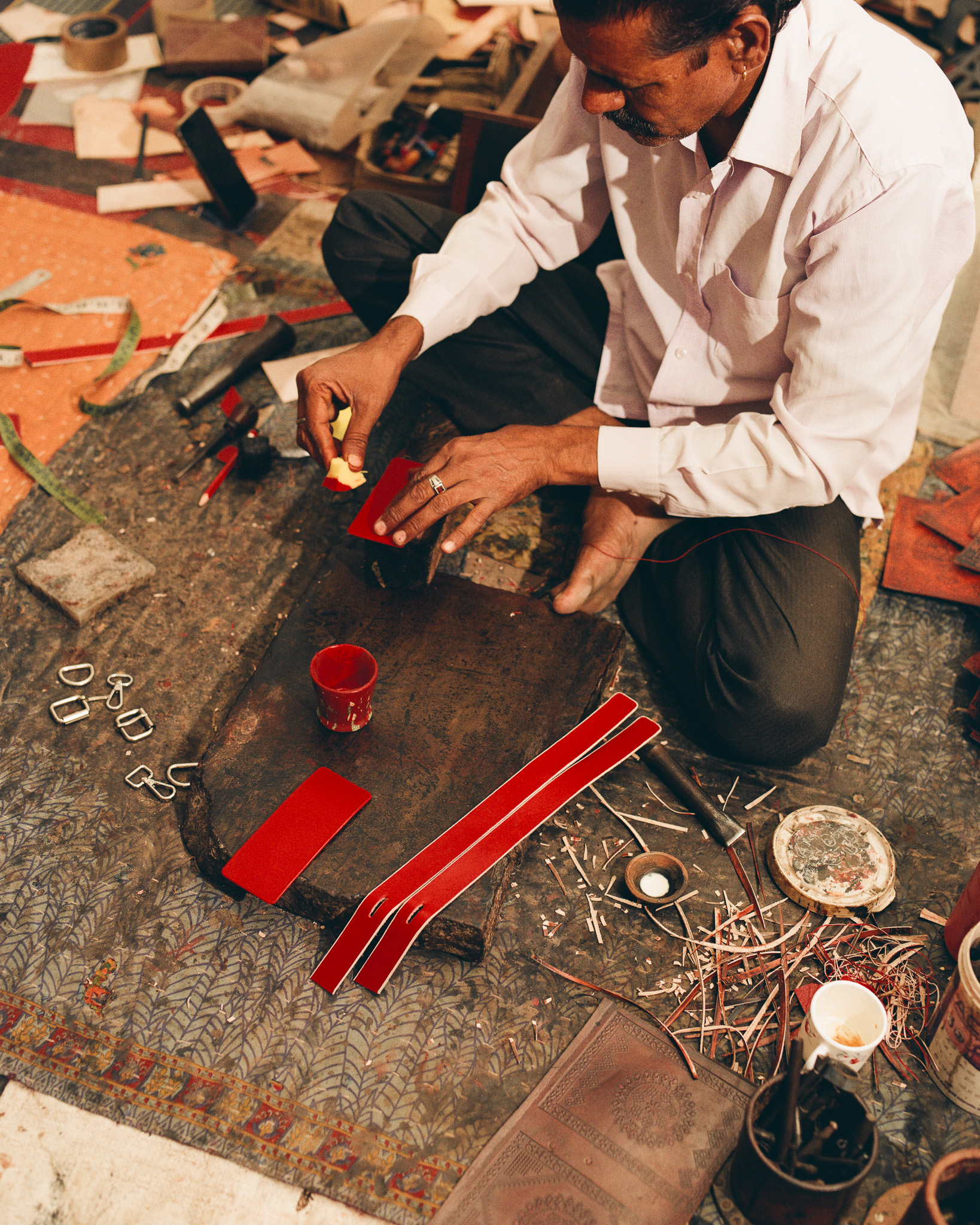
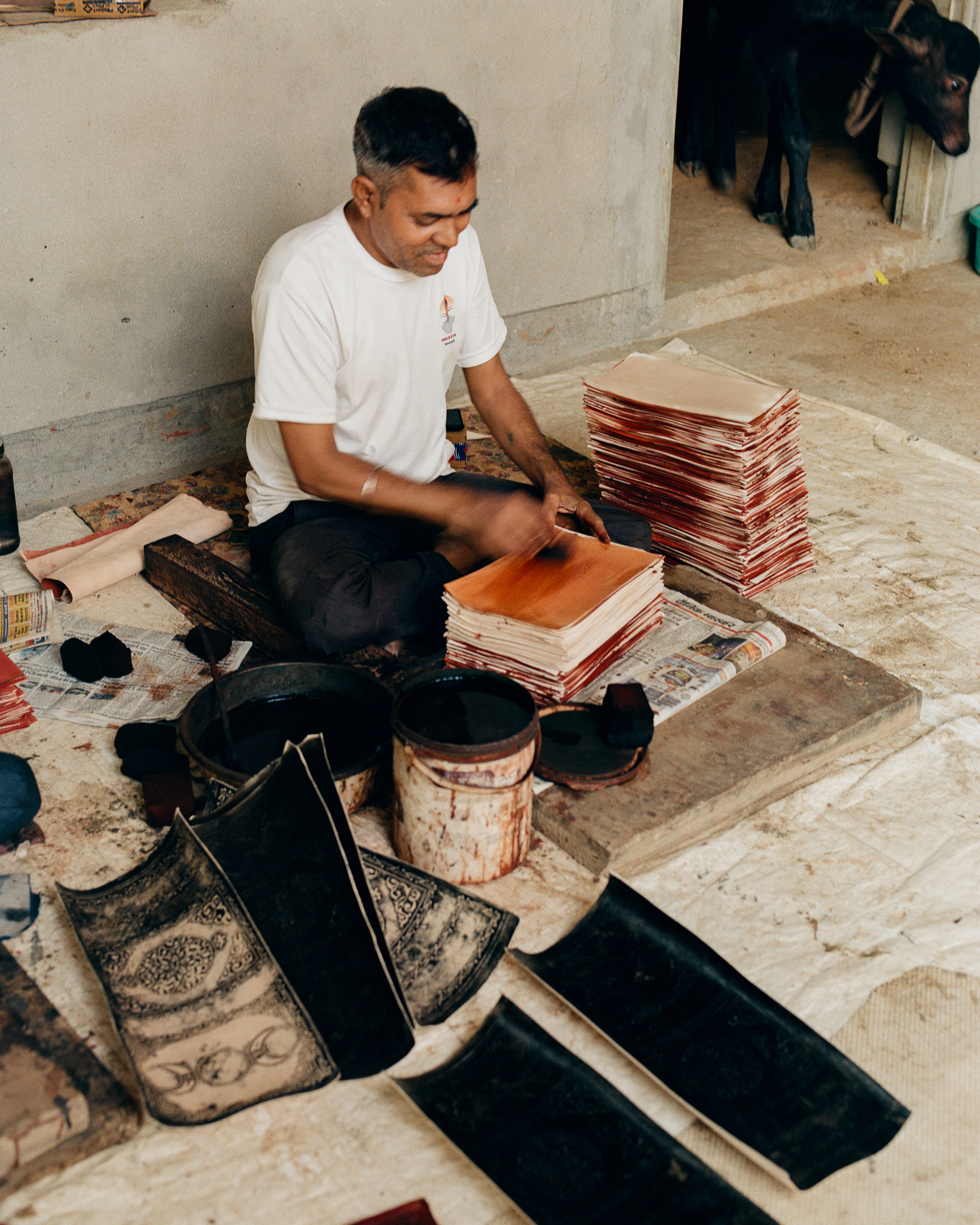 Singh always knew he was different. Growing up in a strict religious household in Ara, a small city in the North East of India, Singh would try on his sister’s sheer dupatta, a long scarf typically worn by women over the shoulders or head, in secret. It felt liberating, but wearing it outside the house wasn’t an option. Even wearing a bangle or experimenting with hair styles could irk family members. Singh felt claustrophobic. “As long as I live in this house,” he remembers thinking, “I’ll never be able to find myself, explore myself, discover myself.”
Singh always knew he was different. Growing up in a strict religious household in Ara, a small city in the North East of India, Singh would try on his sister’s sheer dupatta, a long scarf typically worn by women over the shoulders or head, in secret. It felt liberating, but wearing it outside the house wasn’t an option. Even wearing a bangle or experimenting with hair styles could irk family members. Singh felt claustrophobic. “As long as I live in this house,” he remembers thinking, “I’ll never be able to find myself, explore myself, discover myself.”
At 18, he left home to study fashion at the National Institute of Fashion Technology in New Delhi and a whole new world of style opened up. Singh was falling in love with disco, listening to Madonna and Grace Jones, gawking at their show-stopping outfits—a kaleidoscope of latex, sequins, and leather. He wanted to look like them. But when he Googled “corset” or “harness,” he couldn’t find anywhere in India selling them. “I’m not going to be another designer doing saris,” he remembers thinking. “I'm going to build a brand that sells this,” he said to himself, “that fills this void in the Indian market.”
But finding a local leathermaker who was willing to make corsets and harnesses was another story. He had to try about eight leathermakers until, in the autumn of 2020, he found Anisha Enterprises. The first time he drove to the village, he felt nervous. Being “very evidently queer,” he wasn’t sure what the Atal family, who ran the company, would make of him. Singh says the Atals were initially skeptical of him too. Because of the COVID pandemic, Singh didn’t shake their hand, which, according to Singh, offended them. They thought he didn’t want to touch them because he belonged to a higher caste.
Gradually, though, as Singh returned to the village day after day, the tension dissipated. These days, the Atals send Singh photos of them trying on Subculture products, like dog-earred-masks and chained harnesses. Singh feels like an extension of the family, often staying after a business visit for a lunch of dhal and roti.
Today, Singh is sitting with Mahesh Atal, the father of the family, chatting over chai and rasgulla (a syrupy dessert ball made of milk and sugar). The two men have matching gold hoop earrings; Singh bought a pair for Atal after he complimented his own hoops. Atal, who has slick black hair and a tightly curled mustache, is making a pair of hard-leather handcuffs, using his big toe to hold down a strand of blood-red leather on a plank of wood.
When they first started working together, Singh would bring over tools, but Atal ignored them, opting instead for his own well-worn rafi scissors or singular punch and die (a tool used to punch holes into material). Singh respected and admired Atal’s traditional craftsmanship.
“That's what also makes the pieces special,” he says. “A lot of soul and energy goes in every piece.” It reminds him of the Indian custom of eating food with the hands, squishing food between finger tips, a delicate dance between hands, lips, mouth, and tongue. “There's much more involved in it than simply consuming the food,” he says. “It works very differently in your body when you feel and touch.”
Touch is integral to the Subculture universe. Singh delights in describing the sensory experience of his products, from the stickiness of a latex catsuit to the burn of metal chains on the neck. He’s also fascinated by how his products sound—the clinking and clanking of buckles, the swishing and swooshing of dangling leather strips.
Atal spikes a knife into the strip of leather and demonstrates how the strap fastens around his ankle. The handcuffs have self-detachable buckles, so no one is tied up who doesn’t want to be. “I don’t like to be restrained,” Singh laughs.
“Everybody presumes that I must be one of the kinkiest people,” says Singh. “I’m absolutely not.” Instead, Singh’s sense of kink is inspired by the everyday, like the scent of jasmine incense that filled his house as a child. Spirituality has been a formative part of his journey into kink. The years he spent staring at sequinned saris, studying the way the fabric fell and gathered, observing the statues of temple goddesses who held lotus flowers in their hands, were all foundational to the way he approached design.
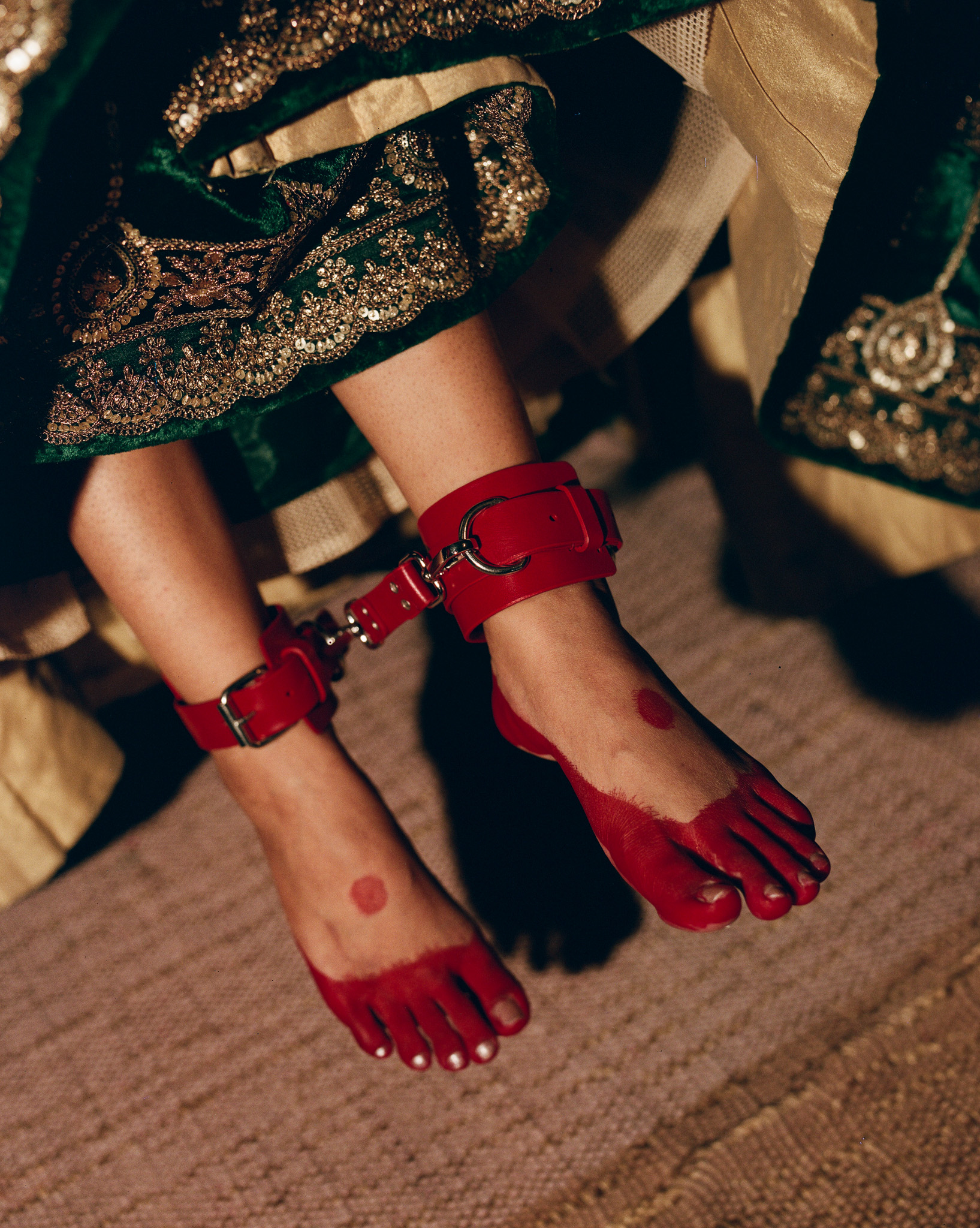
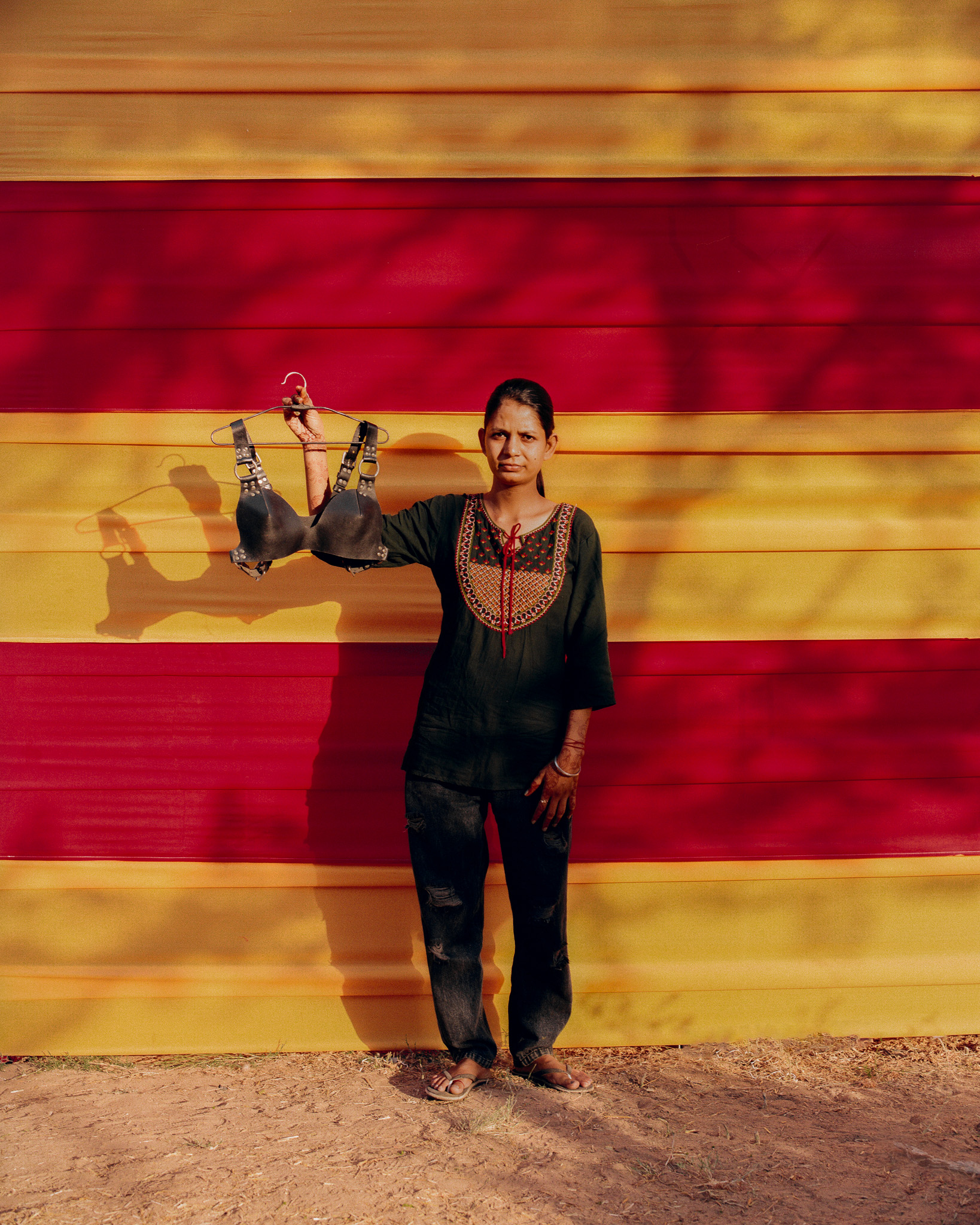
 India has a long legacy of sexual openness and erotic expression. The Kama Sutra, likely composed in the third century CE, includes a number of progressive elements alongside its depiction of experimental sex positions, from the tritiya-prakriti people (often interpreted as a third gender) to Svairini (a female character who lives alone or with female partners). Many Hindu temples feature intricate carvings of explicit sexual scenes and gender-fluid figures like Shiva (sometimes depicted with only one breast).
India has a long legacy of sexual openness and erotic expression. The Kama Sutra, likely composed in the third century CE, includes a number of progressive elements alongside its depiction of experimental sex positions, from the tritiya-prakriti people (often interpreted as a third gender) to Svairini (a female character who lives alone or with female partners). Many Hindu temples feature intricate carvings of explicit sexual scenes and gender-fluid figures like Shiva (sometimes depicted with only one breast).
But in the nineteenth century, when the British colonized India, they brought with them restrictive ideas about sex, gender, and sexuality. Trans people were once celebrated and held respected positions in Indian society, but under the British empire, gender fluidity was presented as a moral issue, leading to collective distrust and stigmatization. By 1861, homosexuality was declared illegal. “India’s fluid gender and sexual norms did not fit into Britain’s strict Victorian conceptions of appropriate sexual behavior,” Amy Bhatt, professor of gender and women's studies at University of Maryland, writes in The Conversation.
In recent years, however, things have been changing. According to a study conducted by That’s Personal, the sale of sex toys and other adult projects increased by 65% in India’s post-lockdown phase. Shweta Sangtani, a lawyer and cofounder of Sangya Project was expecting backlash when she launched India’s first intimate massager during the pandemic, but, like Singh, she was surprised at how well the brand was received. “COVID opened the floodgates,” she tells me over Zoom, “We as a culture are so starved of these conversations.”
Still, getting her products off the ground was a challenge. She struggled to find a bank, a payment gateway service and a packaging manufacturer who would work with the brand. Sangtani largely puts this down to pervasive misunderstandings around India’s murky “obscenity law” (which, she says, does not apply to sex toys). A few days before we spoke, the Bombay High Court had ordered the immediate release of paintings seized from a passenger at a Mumbai airport for alleged obscenity. “Just because something pertains to sex [that] does not make it obscene,” says Sangtani.
Sangtani says that there is still a lot of work to do in bringing conversations about sex and sexual pleasure to the mainstream. At present, sex-positive brands like Sangya Project mainly operate in English-speaking circles. “India is a really big country with a very large population with so many languages,” she says, “You can't make people feel inclusive if you're only talking to them in English.”
Rather than imitating Euro-centric models of kink culture, Singh wants to celebrate fetishwear in a distinctly South Asian context, opting for flourishes like packaging inspired by the erotic figures on Khajuraho temples. But having an “Indian spin” on fetishware or kink parties can be difficult. “The moment you try and… make it Indian, it can very quickly become a controversial conversation,” he says. “There's a fine line… you have to push it very slowly.”
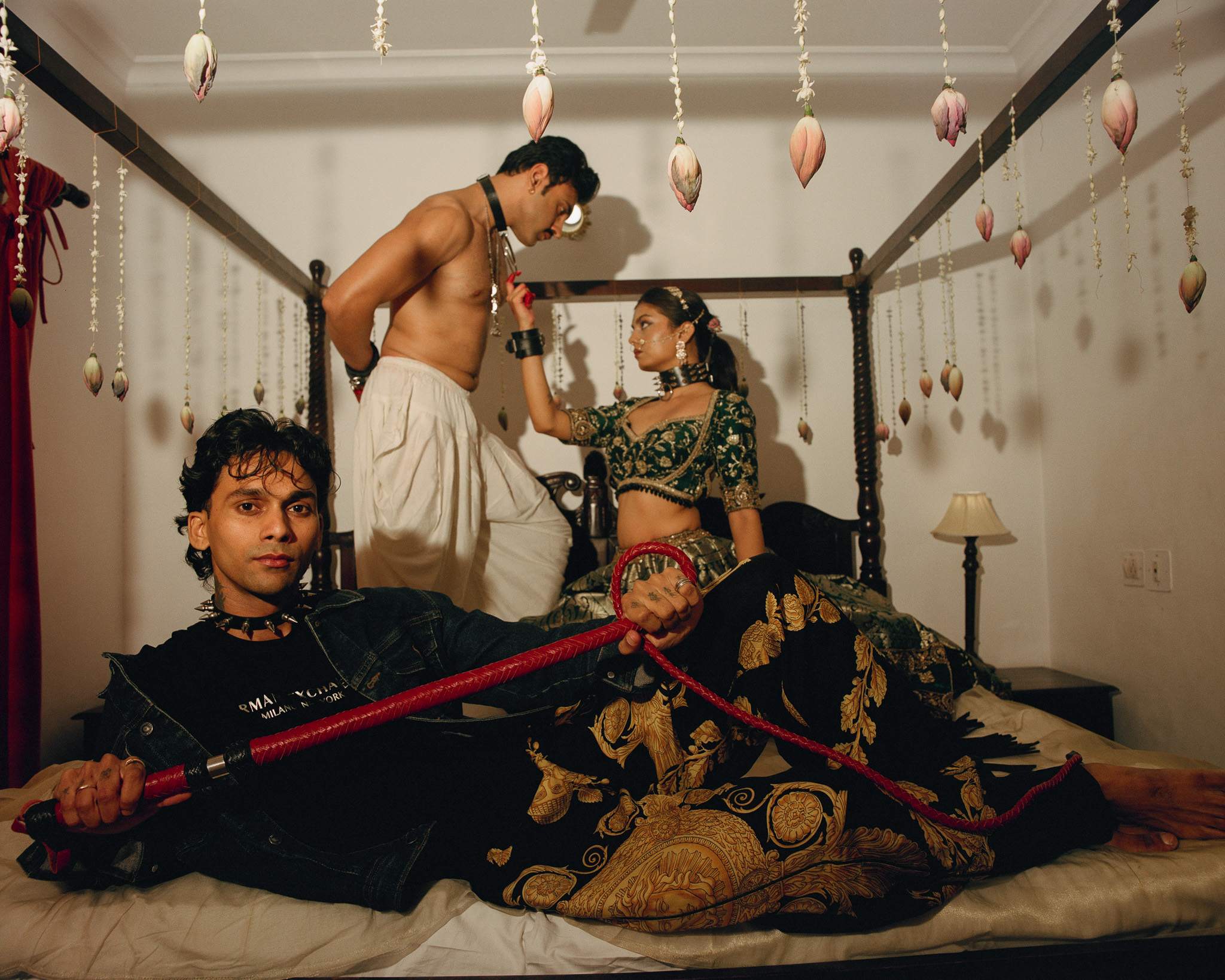
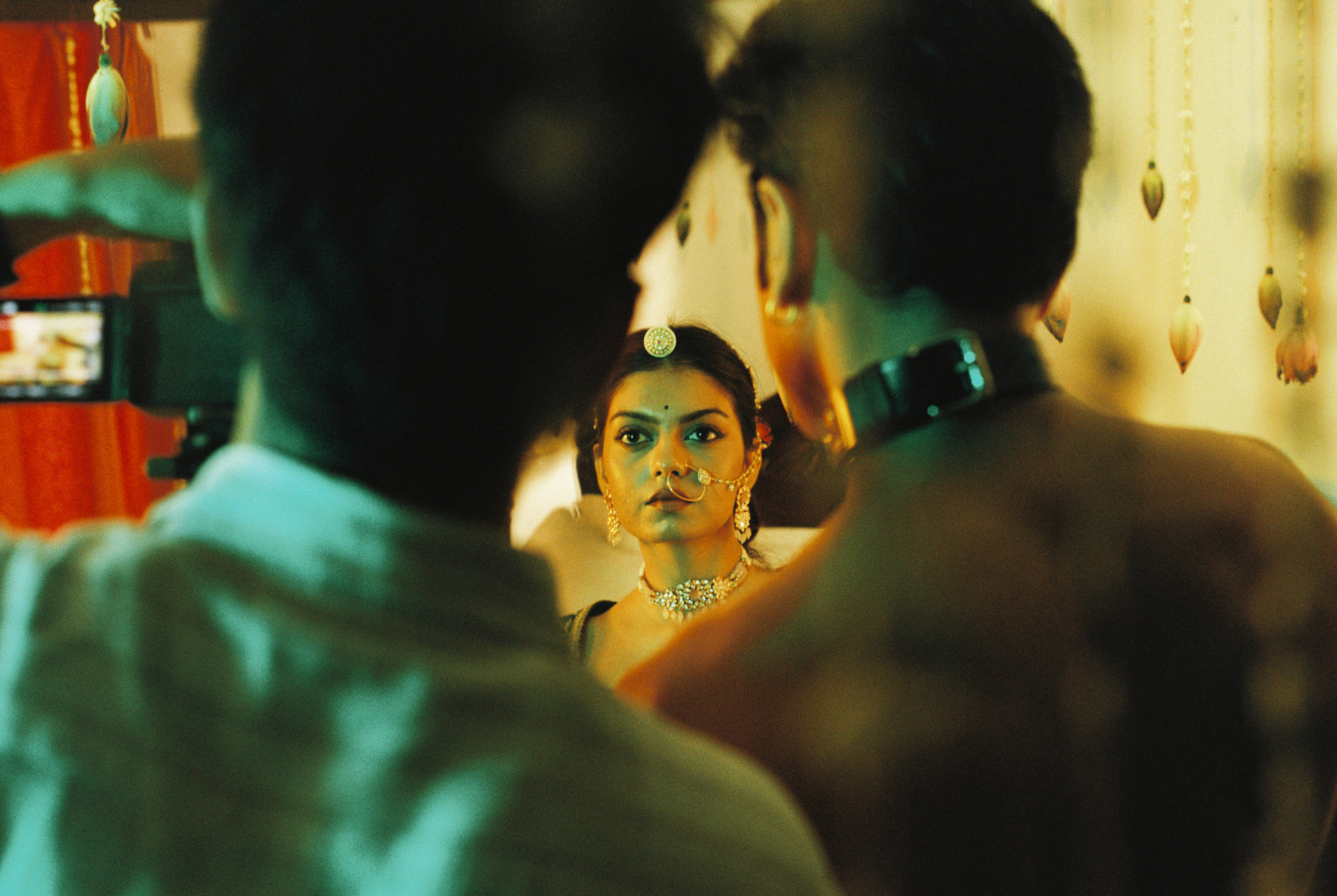
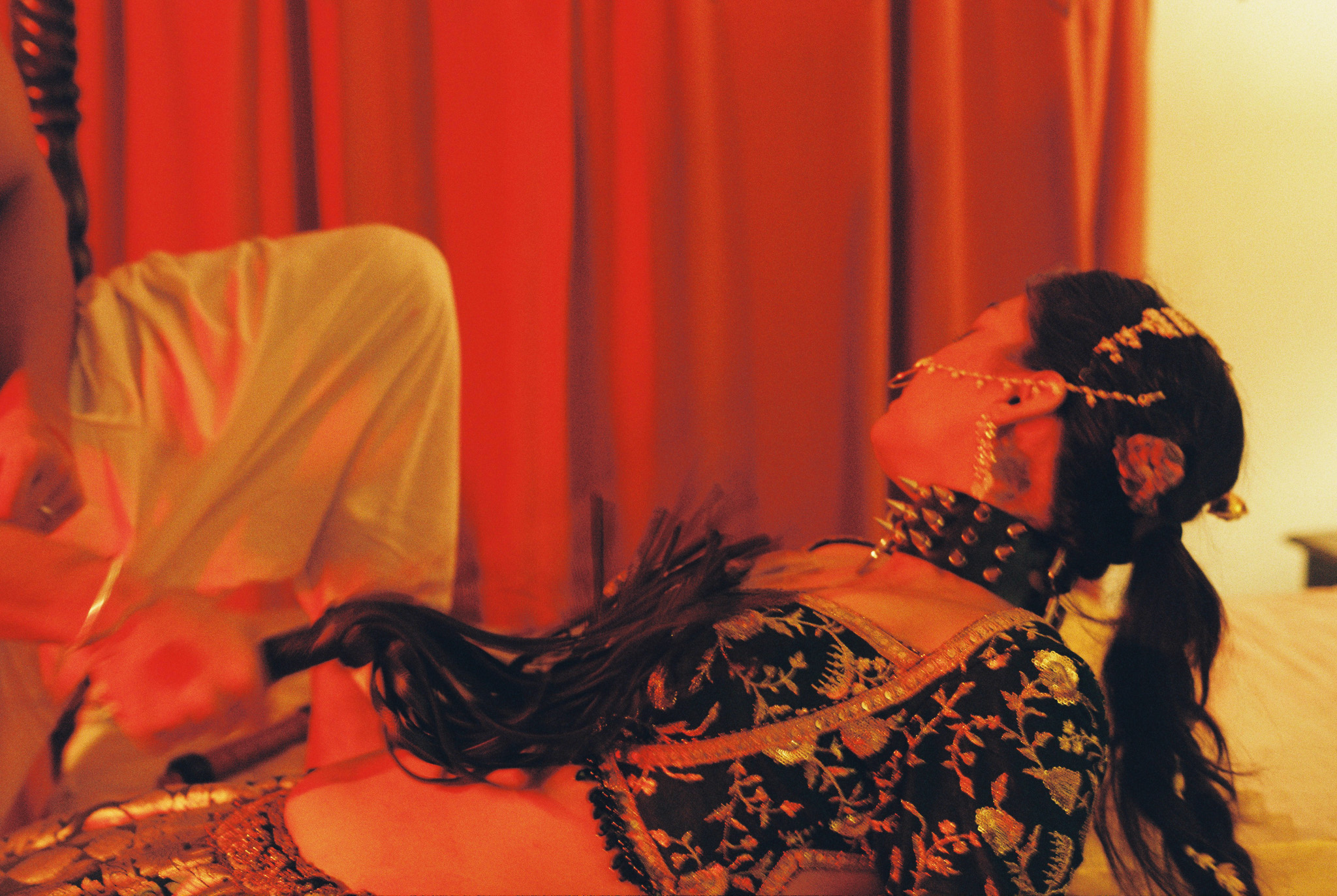 Singh arrives at a Jaipur hotel called Chirmi Palace on a Saturday morning, wearing an Armani t-shirt and loose pants with a gold paisley pattern. He’s directing a Subculture promo video—“The First Night”—to release in the run-up to Diwali and has rented a room for the day, decorating the four-pillar mahogany bed with chains of cream and pink mogra flowers, which make the room smell intensely sweet.
Singh arrives at a Jaipur hotel called Chirmi Palace on a Saturday morning, wearing an Armani t-shirt and loose pants with a gold paisley pattern. He’s directing a Subculture promo video—“The First Night”—to release in the run-up to Diwali and has rented a room for the day, decorating the four-pillar mahogany bed with chains of cream and pink mogra flowers, which make the room smell intensely sweet.
Singh is explaining the first scene of the video to the models, whose hands and feet are dyed red, a customary practice for brides on the first night of an Indian wedding. Yashashvi Soni, who is dressed in a green and gold dress with sparkly peacock-like plumage, is to whisper in Ashish Khatri’s ear: “I consent.” Next, Khatri gives Soni a turmeric milk drink (known to boost male libido), while she, in return, gives him a butt plug. “I leave a lot of things to presumption,” says Singh, “if you know, you know, if you don’t…”
But posting videos like this one on social media always comes with risk. Singh says he often gets shadow banned, despite seeing bigger brands post much more explicit content. When he incorporates a religious element, things become even more contentious. Last year, when he released a Subculture video around Diwali, Singh received a swell of hate-filled messages. “It’s a constant battle,” he explains, “to change the narrative to freedom of expression, choice, sexuality, sex positivity.”
This year, however, Singh is determined. “I want people to get offended,” he says of the video (now live on Instagram) “The idea is to offend them.” He hopes that just by existing, Subculture is disrupting social norms, providing a platform for unfiltered and uncensored conversation about sex and desire. “It's okay to have different sexualities. It's okay to have kinks, it's okay to have fetishes,” Singh says. Whatever your sexual language is, “it is fucking okay.”
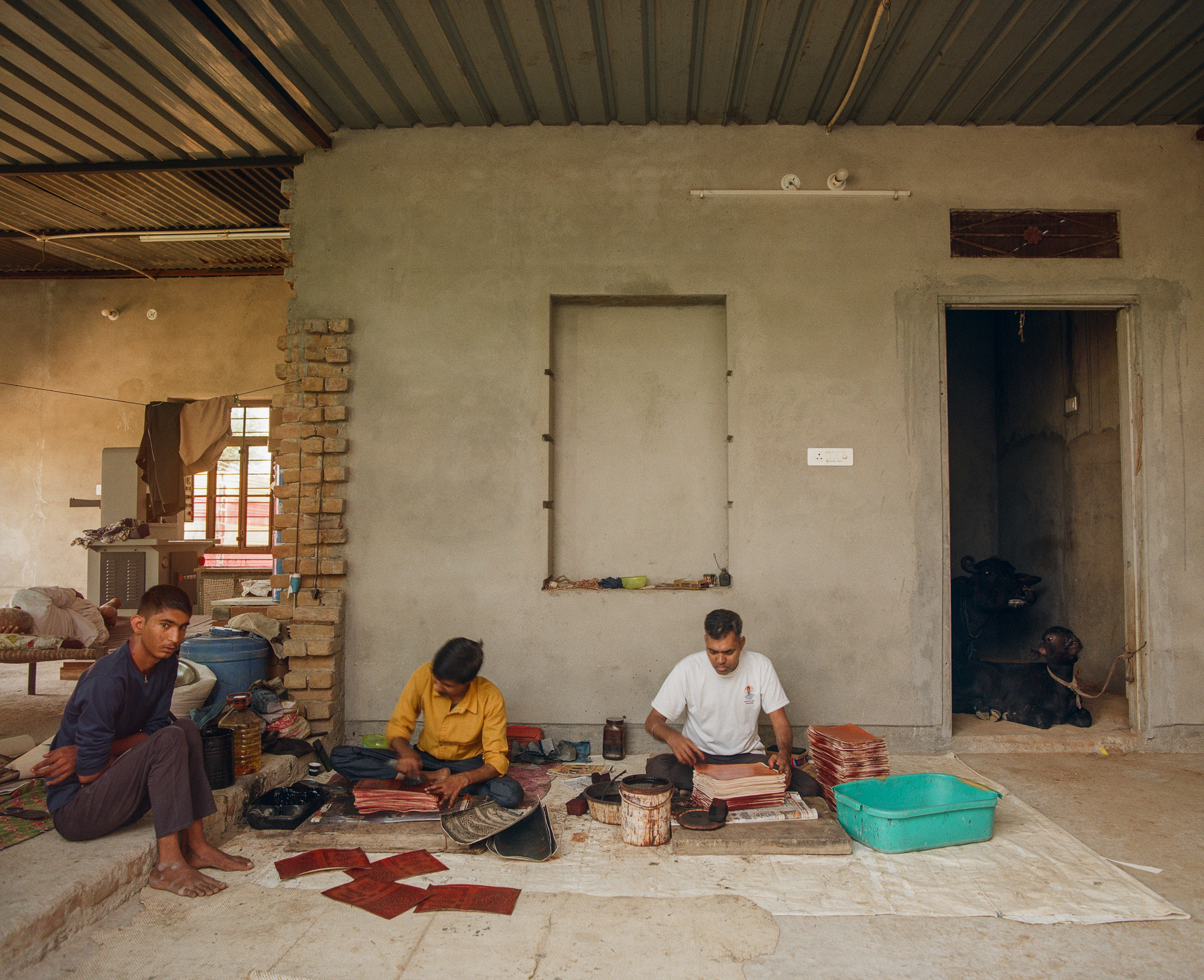
Carl van der Linde (b. 1993) is a South African travel and documentary photographer who explores cultural intersections, often capturing the essence of human experiences on societal peripheries. His compelling visual storytelling earned him third place at the National Portrait Gallery's Taylor Wessing Prize in 2023 and recognition as one of PhotoVogue's Next Generation Fashion Image Makers in 2022. Carl is based in Cape Town.


